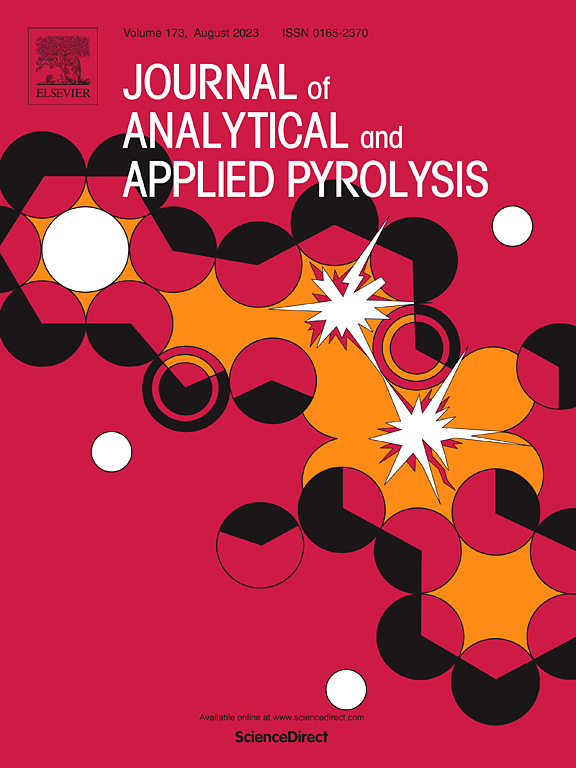Catalytic conversion of lignin to aromatic monomers via heterostructured N-doped carbon encapsulated highly dispersed and ultrasmall MoC nanoparticles
IF 6.2
2区 化学
Q1 CHEMISTRY, ANALYTICAL
引用次数: 0
Abstract
The selective cleavage of C-O is facing a challenge in lignin depolymerization for producing aromatic monomers. Hence, N-doped carbon supported highly dispersed and ultrasmall MoC nanoparticles were prepared via a two-stage pyrolysis process using a mixture of glucose, ammonium molybdate and melamine for the conversion of lignin into aromatic monomers. A series of MoC/NC-x catalysts were prepared by varying the Mo:C weight ration among which the optimal MoC/NC catalyst showed the best hydrogenolysis performance. The real birch lignin could be completely converted at 280 ℃ after 4 h with 26.1 wt% aromatic monomers. The N-doped carbon was not only used as support to immobilized MoC nanoparticles, but also affecting the pore properties and metal-support interaction. Experimental and theoretical results reveal N can modulate the orbital structure of Mo to promote H2 activation. Moreover, the pyridinic N contributes to the highest adsorption energy for 2-phenoxy-1-phenethanol and the disassociation of Calkyl-O bond is significantly reduced on MoC/NC. This work provides a promising approach for the conversion of lignin to produce aromatic monomers with general applicability.
异结构n掺杂碳包封高分散超小MoC纳米颗粒催化木质素转化为芳香单体
在木质素解聚制备芳香单体的过程中,C-O的选择性裂解面临着挑战。因此,利用葡萄糖、钼酸铵和三聚氰胺的混合物,通过两段热解工艺制备了n掺杂碳负载的高分散超小MoC纳米颗粒,将木质素转化为芳香单体。通过改变Mo:C质量比制备了一系列MoC/NC-x催化剂,其中最优的MoC/NC催化剂具有最佳的氢解性能。以26.1 wt%的芳香族单体为原料,经过4 h,在280℃下可完全转化桦木木质素。n掺杂碳不仅可以作为固定化MoC纳米颗粒的载体,还可以影响其孔隙性质和金属-载体相互作用。实验和理论结果表明,N可以调节Mo的轨道结构,促进H2的活化。此外,吡啶N对2-苯氧基-1-苯乙醇的吸附能最高,并且在MoC/NC上显著减少了Calkyl-O键的离解。本研究为木质素转化为具有普遍适用性的芳香单体提供了一条有前途的途径。
本文章由计算机程序翻译,如有差异,请以英文原文为准。
求助全文
约1分钟内获得全文
求助全文
来源期刊
CiteScore
9.10
自引率
11.70%
发文量
340
审稿时长
44 days
期刊介绍:
The Journal of Analytical and Applied Pyrolysis (JAAP) is devoted to the publication of papers dealing with innovative applications of pyrolysis processes, the characterization of products related to pyrolysis reactions, and investigations of reaction mechanism. To be considered by JAAP, a manuscript should present significant progress in these topics. The novelty must be satisfactorily argued in the cover letter. A manuscript with a cover letter to the editor not addressing the novelty is likely to be rejected without review.

 求助内容:
求助内容: 应助结果提醒方式:
应助结果提醒方式:


